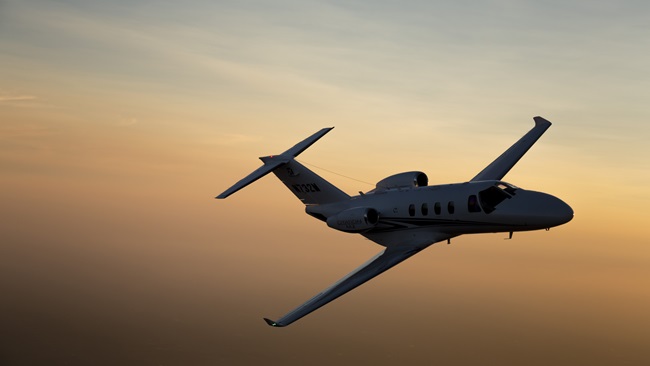Proficiency: The long way around
Go ahead, deviate

Deviations should be made as soon as possible and be sufficiently large. There is a tendency to constrain deviations and to delay until they are imperative. We typically ask ATC for 5-degree or perhaps 10-degree deviations and just graze weather. However, asking for 15 degrees during a flight adds less than 4 percent to the route and fuel needed. Even a deviation at a large angle typically has a small penalty.
Consider deviations for reasons other than weather: circumventing mountainous terrain, bodies of water, or restricted/prohibited areas. A deviation should not require use of reserve fuel. If it will, an earlier landing is required.
Deviating early and at a large angle is a safe strategy with surprisingly small penalties in time, distance, and fuel.

Assuming no wind, deviating 30 degrees to the right or left upon departure, maintaining that heading for half of the trip, and then proceeding directly to the destination only adds 15 percent to the total flight distance. At mid-flight the aircraft will be almost 30 miles right or left of a 100-mile direct course. So the memory items are 30 degrees plus 15 percent and 30 miles/100 miles.
A larger, 45-degree deviation provides a penalty of less than 45 percent, while placing the aircraft 50 miles to the right or left of a 100-mile course. So the memory items are 45 degrees plus 45 percent, and 50 miles/100 miles.
For deviations close to the departure, the penalty is less. For example, assume a 200-nautical-mile flight. We ask for a 30-degree deviation shortly after takeoff. If we only need to deviate 30 degrees over the first 50 nm (measured along the direct course to the destination) that leg will be 57.7 nm (+15 percent of 50). This allows us to pass weather by about 29 nm. Then proceeding direct to the destination (152.75 nm) only adds about 10 percent to the planned direct route (57.7 + 152.75 = 210.5).

If a large deviation is required close to departure, the distance added to the flight is not likely more than the right or left deviation distance. For example, assume upon departure the only safe path is close to a right angle from the direct course to the destination. Deviating 26 nautical miles before turning on course will only add about 26 miles to the trip.
Of course, weather may develop farther along the route of flight. Make the deviation as soon as possible. The longer a necessary deviation is delayed, the greater the penalty in flight time and distance. Assume we have to bypass weather by 30 miles, but begin the deviation 100 miles into a 200-mile flight. The distance will be more than if we began the deviation shortly after takeoff. Availability of Nexrad in the cockpit allows strategic planning of a deviation very early in flight. The worst case is to fly directly toward bad weather, and then deviate at an angle approaching 90 degrees. In geometric terms, the hypotenuse is always less than the sum of the two other legs. Obviously once weather has been passed, the shortest distance is direct to the destination. Do not return to the originally plotted course from departure to destination.

Thinking angles
Cutting corners doesn’t save you much
We aviators flight plan using miles and courses; we seldom think in angles. While requesting a large deviation over a long distance is best done by asking ATC for a change of route direct to a VOR or intersection, I suggest we consider turn degrees in our planning and en route decisions.
We like to cut corners and may pester ATC for direct-to clearances while in flight. However, unless the requested direct clearance involves a turn of 20 degrees (saving 10 percent) or more, savings are negligible.
For example, departing Raleigh Executive Jetport (TTA) in North Carolina for Ocean County Airport (MJX) in New Jersey, I am typically cleared direct TYI ORF SWL SIE direct. Passing TYI the next waypoint ORF seems out of the way. Should I ask ATC for direct SWL or direct SIE? The angle between TYI direct ORF, and TYI direct SIE is 16 degrees. This is not a worthwhile request. The actual savings is only 6.3 nm. The deviation becomes even less worthwhile if the request is direct SWL or after passing TYI.
Always flight plan for an additional 10 percent because of nondirect clearances or when restricted to airways. However, we can do better using the above rules. —IBF


